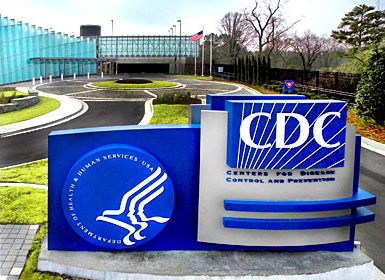CDC to Lose Nearly Half Its Funding in 2026 Budget Proposal
/By Pat Anson
The Centers for Disease Control and Prevention and other federal health programs face severe cuts under a 2026 budget proposal drafted by the White House Office of Management and Budget (OMB).
The Department of Health and Human Services (HHS) could lose about a third of its funding for discretionary programs outside of Medicare and Medicaid. Among the dozens of programs being eliminated or downsized is the CDC’s National Center for Injury Prevention and Control, which developed the agency’s controversial opioid prescribing guideline.
Under the OMB’s budget proposal – known as a “passback” -- the CDC’s funding would be cut by about 44 percent, from $9.2 billion to nearly $5.2 billion.
“President Trump has committed to balancing the budget,” the leaked OMB document states. “Reaching balance requires resetting the proper balance between federal and state responsibilities with a renewed emphasis on federalism; eliminating the federal government’s support of woke ideology; protecting the American people by deconstructing a wasteful and weaponized bureaucracy; and identifying and eliminating wasteful spending.
“Passback levels reflect the reforms necessary to enable agencies to fulfill their statutory responsibilities in the most cost-effective manner possible. Many difficult decisions were necessary to reach the funding levels provided in this Passback.”
The OMB budget for the CDC is intended to refocus the agency on its original core mission of monitoring public health and fighting infectious diseases, a long-sought goal of conservative activists.
Project 2025, a wish-list for the Trump Administration written by the Heritage Foundation, calls the CDC “perhaps the most incompetent and arrogant agency in the federal government.” The conservative think tank wants the CDC’s ability to set public health policy “severely confined” — a goal that the OMB budget would largely achieve if it is implemented in its current form.
“The Budget reforms the Centers for Disease Control and Prevention to refocus CDC on emerging and infectious disease surveillance, outbreak investigations, preparedness and response, and maintaining the Nation’s public health infrastructure,” the OMB said.
The CDC Injury Center was initially created in 1993 to improve workplace safety, but its duties have expanded over the years to include other public health issues outside of its original mission, such as drug overdoses, opioid prescribing, suicides, child abuse, and community violence. The Center’s budget for fiscal year 2024 was over $761 million.
Dr. Debra Houry, a former director of the Injury Center who is currently the CDC’s chief medical officer, advised staff last week to begin planning for the splintering of the agency.
It’s unclear what would happen to the CDC opioid guideline if the Injury Center is abolished. Although voluntary, the guideline’s recommendation to reduce the use of opioid pain medication was widely adopted by states, insurers, doctors and law enforcement, causing millions of patients to be taken off opioids or tapered to lower doses.
Patients and their advocates have long called for the guideline to be revoked. In a 2022 PNN survey of patients, providers and caregivers, 84% said the CDC overstepped its authority and shouldn’t be involved in opioid prescribing or pain management.
The CDC has already seen its workforce reduced by as many as 4,000 positions due to layoffs and early retirements in the second Trump administration. Many of those who were fired have formed an advocacy group called Fired But Fighting to get their jobs back and to demand more transparency from the administration on the downsizing of the CDC.
In addition to the Injury Center, other federal health programs targeted for elimination include the Substance Abuse and Mental Health Services Administration (SAMHSA) and the Agency for Healthcare Research and Quality (AHRQ). Some of the core functions of those agencies, such as those involved in overdose and suicide prevention, are being transferred to the Administration for a Healthy America (AHA), a new centralized agency in HHS under the direct control of Secretary Robert F. Kennedy Jr.
Under the Biden administration, the HHS budget increased by 38% and its staffing increased by 17%. The Trump administration plans to reduce the HHS workforce from 82,000 full-time employees to 62,000.
“We aren’t just reducing bureaucratic sprawl. We are realigning the organization with its core mission and our new priorities in reversing the chronic disease epidemic,” Kennedy said in a statement last month. "This Department will do more — a lot more — at a lower cost to the taxpayer."
The OMB budget proposal has not been finalized and needs the approval of Congress to be implemented.















